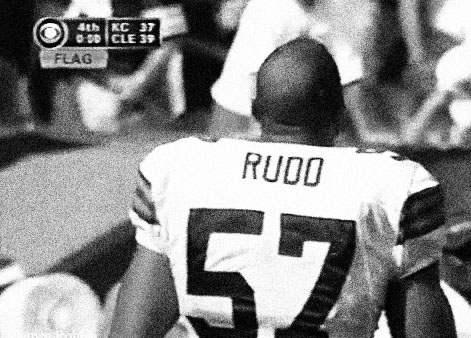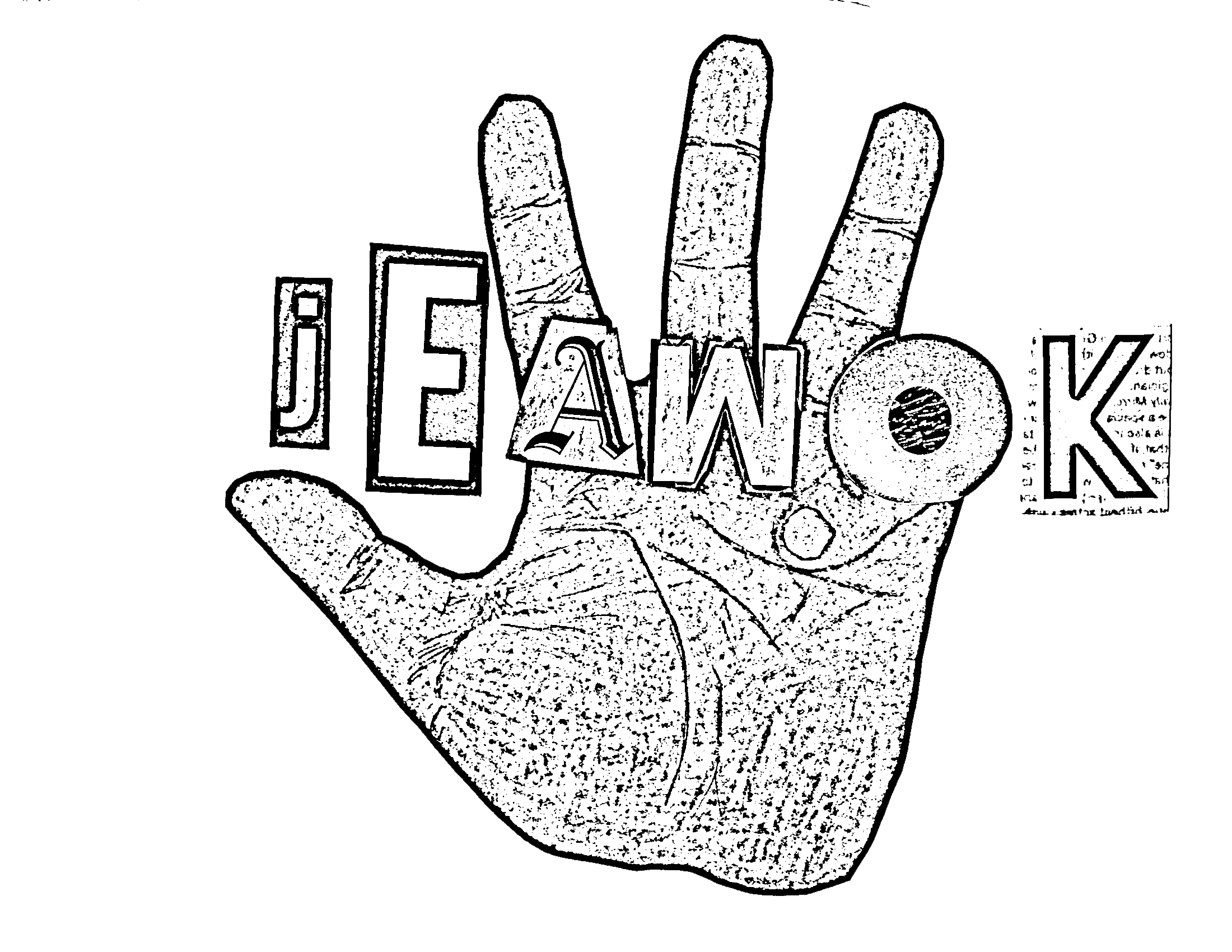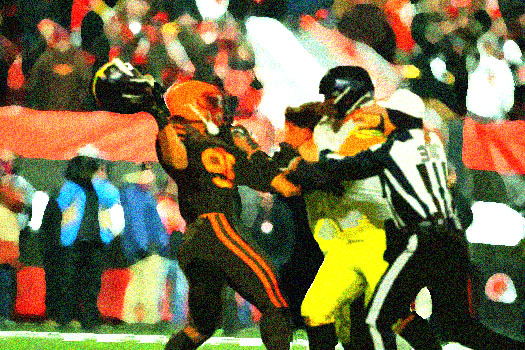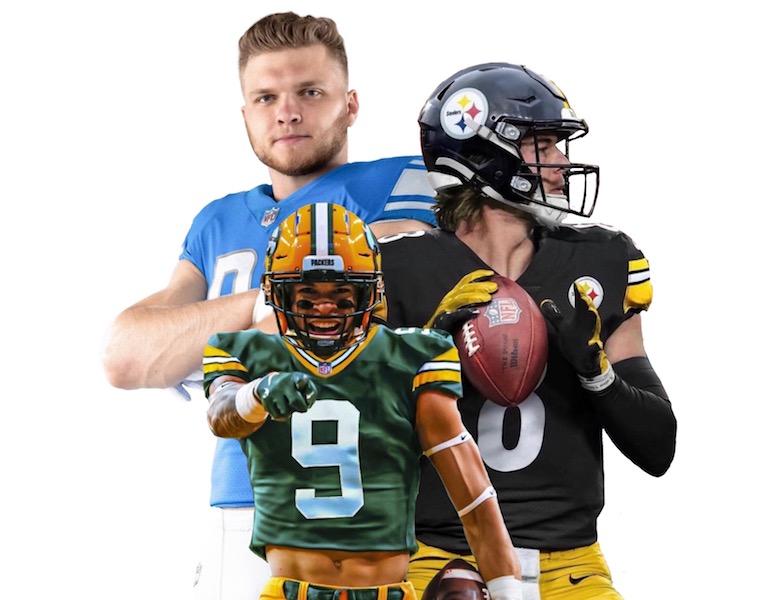On November 14th, Myles Garrett, star defensive end for the Cleveland Browns, removed Mason Rudolph’s helmet and hit him with it. At this point, everyone who is either immersed in the world of sports—or even adjacent to it—knows what happened last month. With eight seconds left in a rivalry game that had been out of reach since the 3rd quarter, his actions were excessive and unnecessary. Garrett, the first pick in the 2017 draft and a lock for this year’s Pro Bowl before the Browns-Steelers matchup, has since been suspended indefinitely by the NFL. The day after, I joked with my father that it, somehow, wasn’t even the worst thing involving a helmet to happen to the Cleveland Browns this century, because—
It’s always been about a helmet with the Browns, hasn’t it? In Cleveland’s 2002 season opener, the Browns had a 39-37 lead over the Kansas City Chiefs with 10 seconds left in the 4th quarter. Trent Green, the quarterback for the Chiefs at the time, dropped back for a pass and was engulfed in a sea of Browns defenders almost immediately. At first, it appeared that Dwayne Rudd had sacked Green as the clock ran out. However, Green had been able to lateral the ball to offensive tackle John Tait just before hitting the ground. Rudd had no clue a lateral even happened, and believed he had sacked Green to end the game. In celebration, Rudd took off his helmet. Though Tait was able to make it down to the Browns’ 26-yard line, he had been knocked out of bounds. Time had run out and the game should have been over. Yet, Rudd was flagged for unsportsmanlike conduct for tossing his helmet before the play was blown dead during regulation. The Chiefs were given a free, untimed play—which resulted in a 30-yard, game-winning field goal from Morten Andersen.

Cleveland has been plagued by the burden of helmets since I was a kid. The Browns are the only team left in the NFL without some sort of design on their helmets. It’s just orange. But, it hasn’t always been that way.
***
1946-1951
The Browns played in the All-American Football Conference and donned white leather helmets.
1950-1951
The Browns introduced alternate solid orange leather helmets, due to the NFL’s rule that teams had to wear helmets that contrasted with the white football used in night games.
1952-1956
The Browns implement orange plastic helmets with a single white stripe down the center of the crown. The facemasks are gray.
1957-1959
Still donning the orange helmets with a white stripe, the team adds brown jersey numbers to the sides.
1960
The Browns keep the orange helmets, but add brown stripes that flank the white stripe down the center of the crown.
1961-1974
The Browns remove the jersey numbers from the helmets.
1975-1995
The facemasks are changed from gray to white.
1999-2005
Upon the team’s return to the NFL, they bring back the same helmets they were wearing before the relocation to Baltimore in 1995.
2006-2008
The team creates an alternate uniform ensemble that included a helmet identical to the headgear the team wore from 1957-1959.
2006-Present
For the team’s 60th anniversary, the helmet facemasks were changed back to gray from white.
***
Growing up in Northeast Ohio meant being a Browns fan through the worst seasons—which, coincidentally, was the mindset every season. Since Cleveland is the only team without a design on the helmet, the uniforms are the recipient of extensive grilling. In 2015, the team changed the uniforms completely, aside from the helmets—which were only upgraded to a darker shade of orange.
James Harrison’s repeated helmet-to-helmet hits on defenseless NFL players, specifically, and most-repeatedly, Cleveland Browns quarterbacks and receivers, led to the league reshaping the in-game personal foul laws in the first half of the decade. It only makes logical Cleveland sense that the Browns would begin and end the 2010s involved in moments dominated by helmets.
It’s always been about helmets in Cleveland, though. Despite having the most minimal helmet design, the team’s helmet has gone through more redesigns than over 60-percent of the NFL. No other team has multiple dark moments in its history defined by the act of what was done with a helmet at the end of a football game. What Myles Garrett did will follow him for the rest of his career, especially during games against Pittsburgh, but, until Cleveland wins a Super Bowl, the team’s legacy will forever be dictated by its supposed lack of change—something that has been met with minimal winning ways since the late-1980s.




